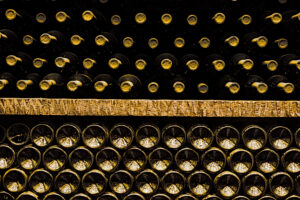
Between inflation and decreasing purchasing power, generational turnover and new places of conviviality that push towards other beverages, healthism, climate change and interest in “lighter” wines, the decline in wine consumption, in Italy and worldwide, is under everyone’s eyes, and constantly analyzed and monitored by WineNews, through data (the latest of which, concerning exports in January 2024, bring a slight smile back to Italian wine) and the opinion of experts. A complex issue, whose signs of change show how a profound consumption revolution is underway that cannot be ignored, but also that wine is not being given up. According to the snapshot drawn up by the Unione Italiana Vini - Uiv Observatory on the basis of Istat, which has released the 2023 tables on the alcohol consumption of Italians, in this context, in 2023 29.4 million wine consumers in our country are confirmed, stable on 2022, so is the general share of penetration of the population (55%), while daily consumers drop to 11.7 million, 400,000 less on 2022, with a balance of wine consumed in Italy in 2023 that amounts to 23 million hectoliters.
The picture that emerges from the Uiv survey on changes in the scenario over the last 12 years is that of a population that in general does not give up wine (+2% the number of wine drinkers on 2011), although with profound signs of changing habits. Represented 58% by males and 42% by females, the new wine consumers and - increasingly - female consumers have in fact a relationship with wine that is more responsible and aware, but at the same time less exclusive, made of frequent betrayals of habits and “flirtations” with other “alcoholic partners”. This is a trend that with the passing of the years gradually characterizes no longer only the young and very young, but is now also reflected in the older generations, who are also increasingly less tied to daily use and to the almost passive use of companionship. Proof of this is, among other things, the important growth of consumers at the aperitif (+31% since 2011), now a habit for almost 22 million people.
For UIV president Lamberto Frescobaldi, “the new Istat surveys confirm once again the extraordinary relationship of Italians with wine: habits change, but probably the current approach is even more stimulating than the motivations of the past. Today the demand is more related to pleasure and sharing than to habit, and this I think is an important proof of maturity that confirms how wine is synonymous with moderation”.
Redrawing the identikit of Italian wine lovers is the growth over the period of female demand (+10%, with males at -3%), the lower daily fruition (-22%) and the concomitant growth of 29% of “non-daily” drinkers, who now number 17.7 million people and represent 60% of the total, compared to 48% 12 years earlier. A phenomenon, that of occasional drinking, which also involves beer: today two-thirds of blond drinkers do so sporadically.
And if, as it is easy to imagine, among daily consumers the young people of Gen X (up to 24 years old) weigh only 4.4% (half of their incidence on the Italian population), the fast and progressive erosion of “regulars” among the following generations is surprising. In fact, trends for “newspapers” range from -20% to -50% for all subsequent cohorts except the over-65s, a stronghold that alone is worth 40% of regular consumers.
Among the regions with the highest consumption, Emilia-Romagna has the largest share of consumers based on population (61.3%), followed by Valle d’Aosta (60.5%), Tuscany (60.4%) and Veneto (59.8%). It is the province of Trento, on the other hand, that has the largest growth in consumers (+11%), and Basilicata the largest contraction (-9%). Among the macro-regions, the Northeast leads with an incidence of 59.4%, followed by the Center (57.4%), the Northwest (56.7%), the South (51.1%), and the Islands (46.8%).
Copyright © 2000/2026
Contatti: info@winenews.it
Seguici anche su Twitter: @WineNewsIt
Seguici anche su Facebook: @winenewsit
Questo articolo è tratto dall'archivio di WineNews - Tutti i diritti riservati - Copyright © 2000/2026